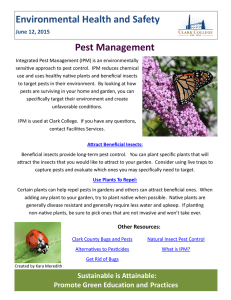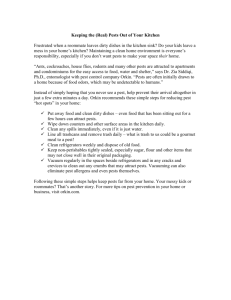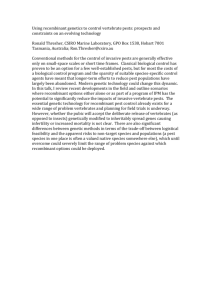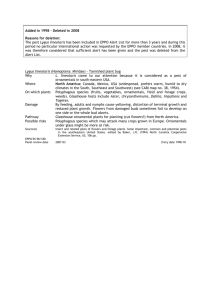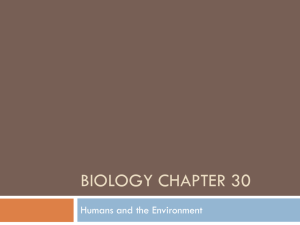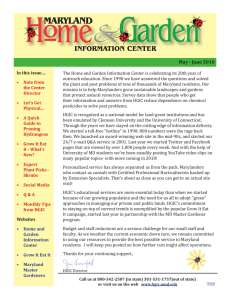Pest and Disease Management Organic Production Andre Leu O
advertisement
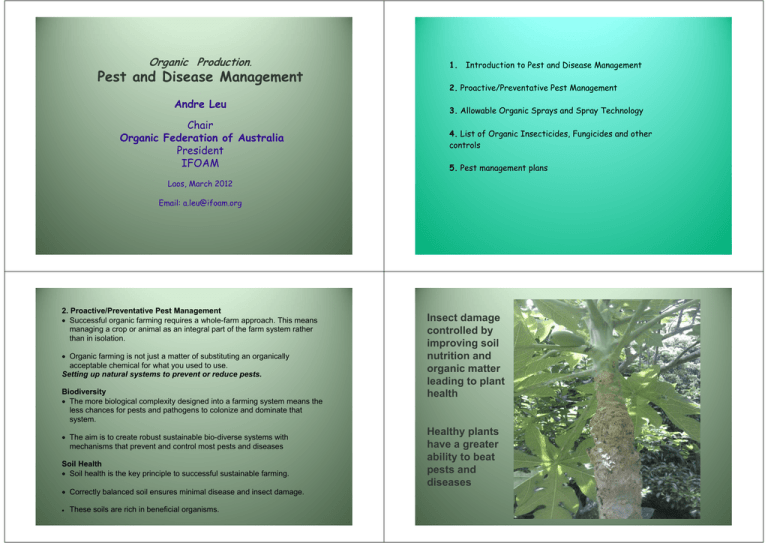
Organic Production. Pest and Disease Management Andre Leu Chair O Organic i F Federation d ti of f A Australia t li President IFOAM 1. Introduction to Pest and Disease Management 2. Proactive/Preventative Pest Management 3. Allowable Organic Sprays and Spray Technology 4. List of Organic Insecticides, Insecticides Fungicides and other controls 5 Pest 5. P t managementt plans l Laos, March 2012 Email: a.leu@ifoam.org 2. Proactive/Preventative Pest Management • Successful S f l organic i ffarming i requires i a whole-farm h l f approach. h Thi This means managing a crop or animal as an integral part of the farm system rather than in isolation. • Organic farming is not just a matter of substituting an organically acceptable chemical for what you used to use. Setting Sett g up natural atu a systems syste s to prevent p e e t or o reduce educe pests. pests Biodiversity • The more biological complexity designed into a farming system means the less chances for pests and pathogens to colonize and dominate that system. • The aim is to create robust sustainable bio-diverse bio diverse systems with mechanisms that prevent and control most pests and diseases Soil Health • Soil health is the key principle to successful sustainable farming. • Correctly y balanced soil ensures minimal disease and insect damage. g • These soils are rich in beneficial organisms. Insect damage controlled by improving p g soil nutrition and organic matter leading to plant health Healthy yp plants have a greater ability to beat pests t and d diseases Composted Field in Tigray resist Rust Wheatt grown Wh on compostt treated fi ld field Wheat infested with stripe rust and sprayed – gave yield of 1.6 1 6 t/ha Wheat grown with chemical fertilizers and requiring spraying with fungicide g Wheat grown on composted soil resist the rust – ggave yield y over 6.5 t/ha Most of the pests are controlled through a number of bio control strategies. Major bio-controls •Ants Ants •Insect eating birds •Ladybirds Ladybirds • Lacewings (Mallada spp) •Hover Hover flies (Syrphidae) •Spiders •Assassin Assassin Bugs •Wasps Insectaries • Refuges of flowering plants are known as insectories • Many beneficial insects have a range of host plants. •Some useful species such as parasitic wasps, Hoverflies and Lacewings have carnivorous larvae that eat pests however the adult stages live mostly on nectar and pollen from flowers. flowers •Flowers Flowers provide beneficial insects with concentrated forms of food (pollen and nectar), increase their chances of surviving, immigrating and staying in the area. •Very importantly flowers also provide mating sites for beneficials, allowing them to increase in numbers. Sustainability Eco--intensification Eco … using high diversity nature for promoting beneficial insects and combating pests. … spraying p y g extracts of p plants and other natural compounds against pests and diseases. … using robust varieties. Sustainability Eco--intensification Eco Insectaries Refuges Created by Strip Mowing Sustainability E -intensification EcoEco i t ifi ti Maximises solar capture Fixes nitrogen and soil carbon Flowers attract beneficial insects Flowering plants with grapes at UC Davis, Davis USA Legume vines in fruit trees Eco-intensification EcoAgroecology Insectaries Borders of flowers create refuges for beneficial insects
